109 fun facts about Croatia. How many of these weird, puzzling, intriguing lies, myths & facts about Croatia do you know (or think I got wrong)?
How much do you know about Croatia? What is a fact, and what is fiction?
Croatia lies in the western Balkans and borders Slovenia, Hungary, Bosnia-Herzegovina, Serbia, and Montenegro. Croatia’s most exciting border, however, is the Adriatic Sea.
After all, the Croatian beaches, islands, and historic towns on the Croatia coast draw in the vast majority of tourists. But, how much else do you know about Croatia? Let’s see…
Skip Ahead To My Advice Here!
Facts About Croatia
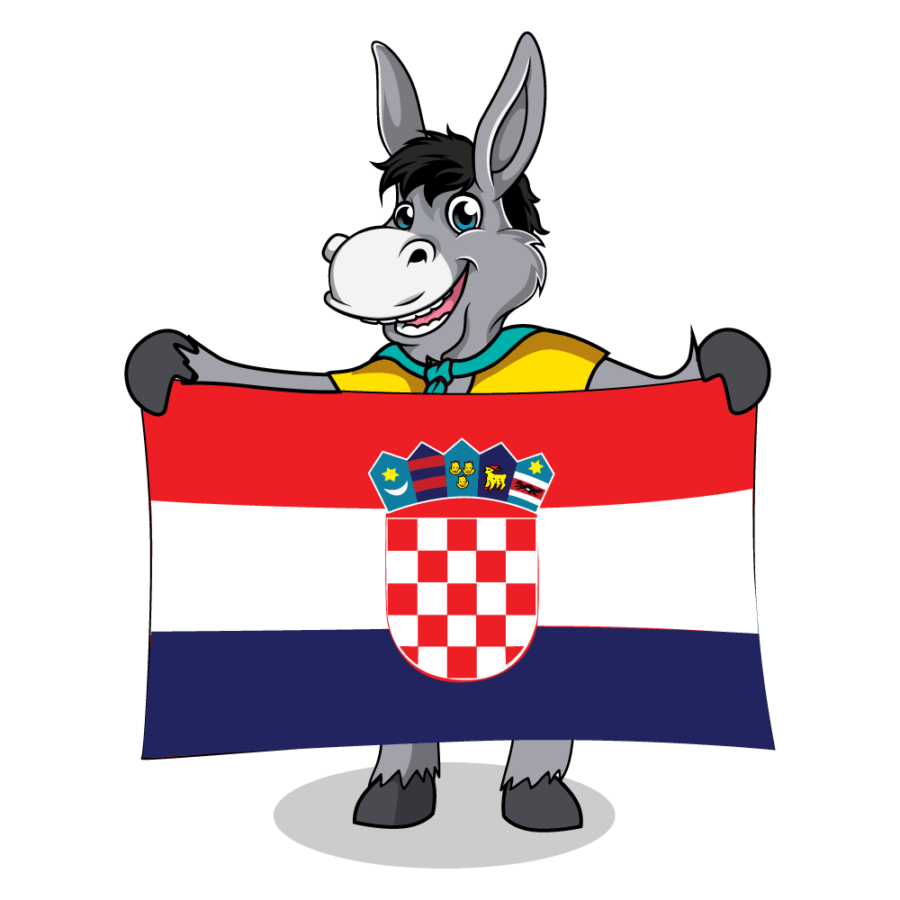
With 109 fun facts about Croatia, this list is just a drop in the ocean of how wonderful and interesting Croatia truly is.
1. Let’s start with an important historical fact about Croatia. King Tomislav was Croatia’s first king, crowned sometime before 925 A.D. you’ll find his name all over the country
2. Croatians settled on the Adriatic coast around the seventh century on the ruins of the Roman Empire.
3. The hit HBO series Game of Thrones was filmed on the Dalmatian coast in Split and Dubrovnik.

4. The fortified walls of Dubrovnik (where Game of Thrones was filmed) are one of Europe’s most preserved fortification systems. (And the most visited)
5. Once the home of bloody Roman gladiator fights, the amphitheater in Pula, Istria, is one of only three preserved in the world. It is also the 6th largest amphitheater in existence. How’s that for another exciting fact about Croatia?
6. The largest Croatian white truffle found weighed 1.31 kg (2 lb 8 oz) and was discovered by Giancarlo Zigante of Pototoska on 2 November 1999 near Buje, a town in Istria, Croatia.

7. A Croatian named Rudjer Boskovic suggested placing five concentric iron bands on the dome of St. Peter’s when a crack had been discovered. His suggestion was adopted and saved Michelangelo’s work from being ruined. This is prob my most fave fun fact about Croatia!
8. Spain and Croatia have the highest number of UNESCO Intangible Goods of any European country. Including lace-making, gingerbread baking, and wooden toy carvings.
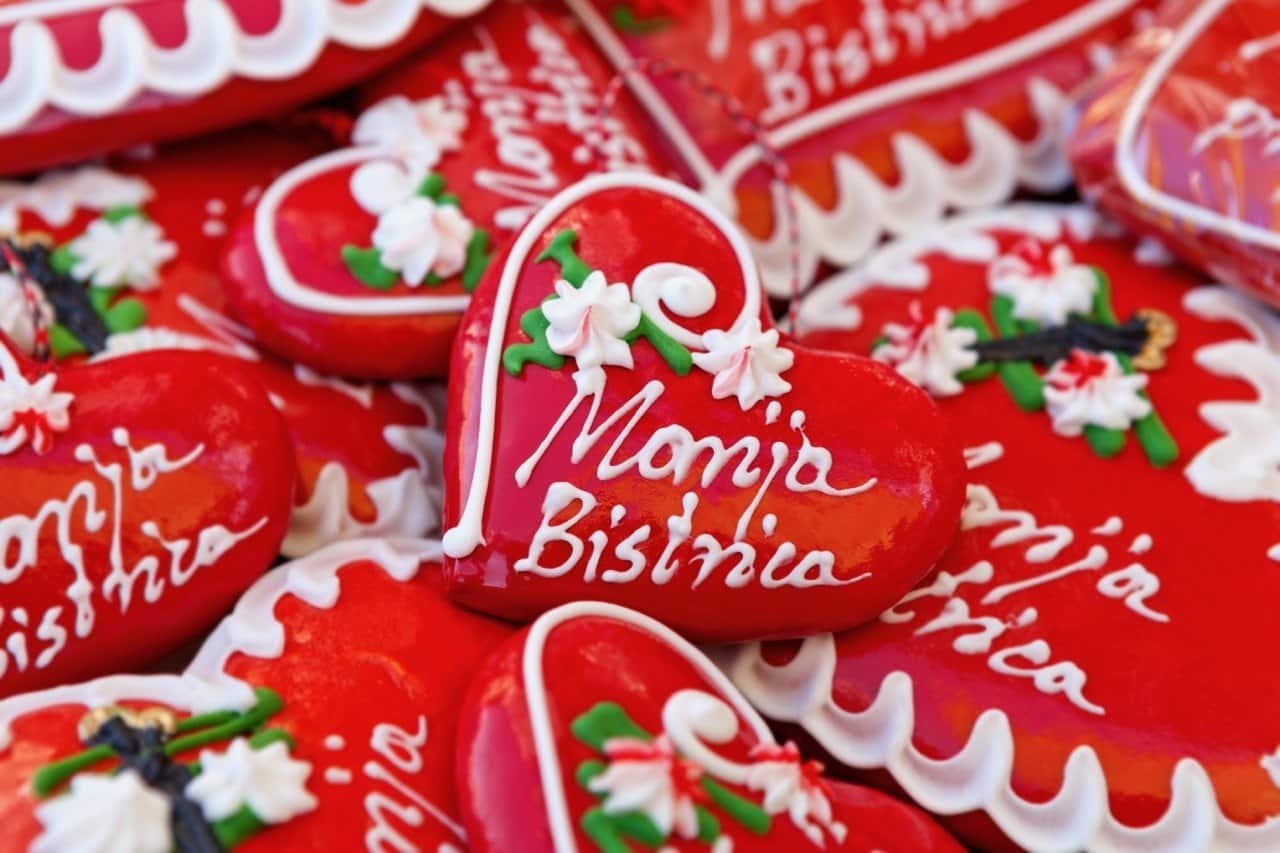
9. Located in southeastern Europe, Croatia borders the Adriatic Sea between Bosnia and Herzegovina and Slovenia. It also has borders with Hungry and Serbia.
10. Ivan Vucetic- criminologist and anthropologist, was born on the island of Hvar (later emigrated to Argentina and was known as Juan) was the pioneer of scientific dactyloscopy (identification by fingerprints), and his methods of identification are used worldwide. Oh wait, maybe this has to be my fave fact about Croatia – as I live on a street named after this guy!
11. On the island of Susak, the women hold the title of having the only national costume that sits above the knee in Europe. I bet you didn’t know that fact about Croatia – huh?

12. The population of Croatia is 4.25 million (2013)
13. The population of Croatia is shrinking each census – 300k people have left the country since Croatia entered the European Union.
14. In Krapina, near Zagreb, professor Dragutin Gorjanovic Kramberger discovered the wealthiest collection of remains of Neanderthal people in the world.
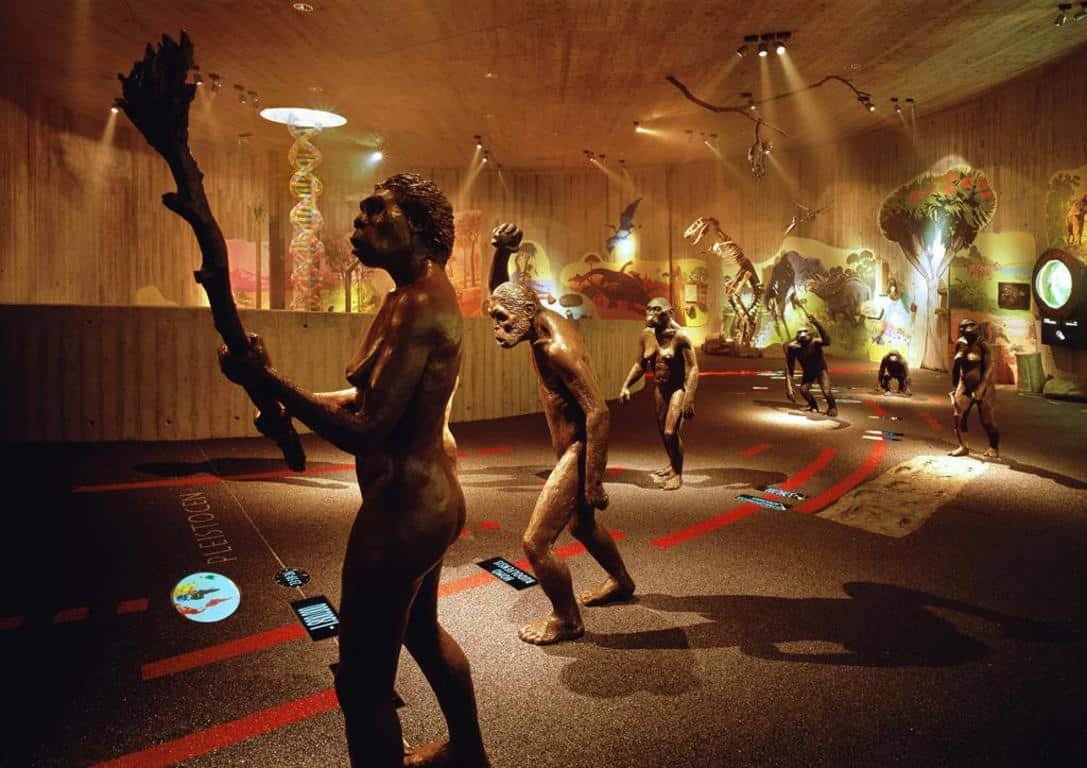
15. Red Lake, near the city of Imotski, Croatia, is the deepest sinkhole in Europe, 3rd the largest in the world.
16. The Krapina Neanderthal Museum covers a surface area of around 1,200 m² and is one of the most modern museums in Croatia and central Europe.
17. The longest word in Croatian is prijestolonasljednikovičičinima which means little heiress apparent to the throne.

18. There are two Croatians’ names on the Moon map. Scientists J. R. Boskovic and A. Mohorovicic.
19. Croatian Slavoljub Penkala invented a mechanical pencil called the Penkala in 1906. The patent was registered in 35 countries, and his company TOZ – Penkala is still in operation in Zagreb, Croatia’s capital.

20. Zagreb Christmas Markets won the Best European Markets 3 years in a row!
21. Inhabited for over 8,000 years, the eastern Croatian city of Vinkovci is the oldest continuously inhabited city in Europe.
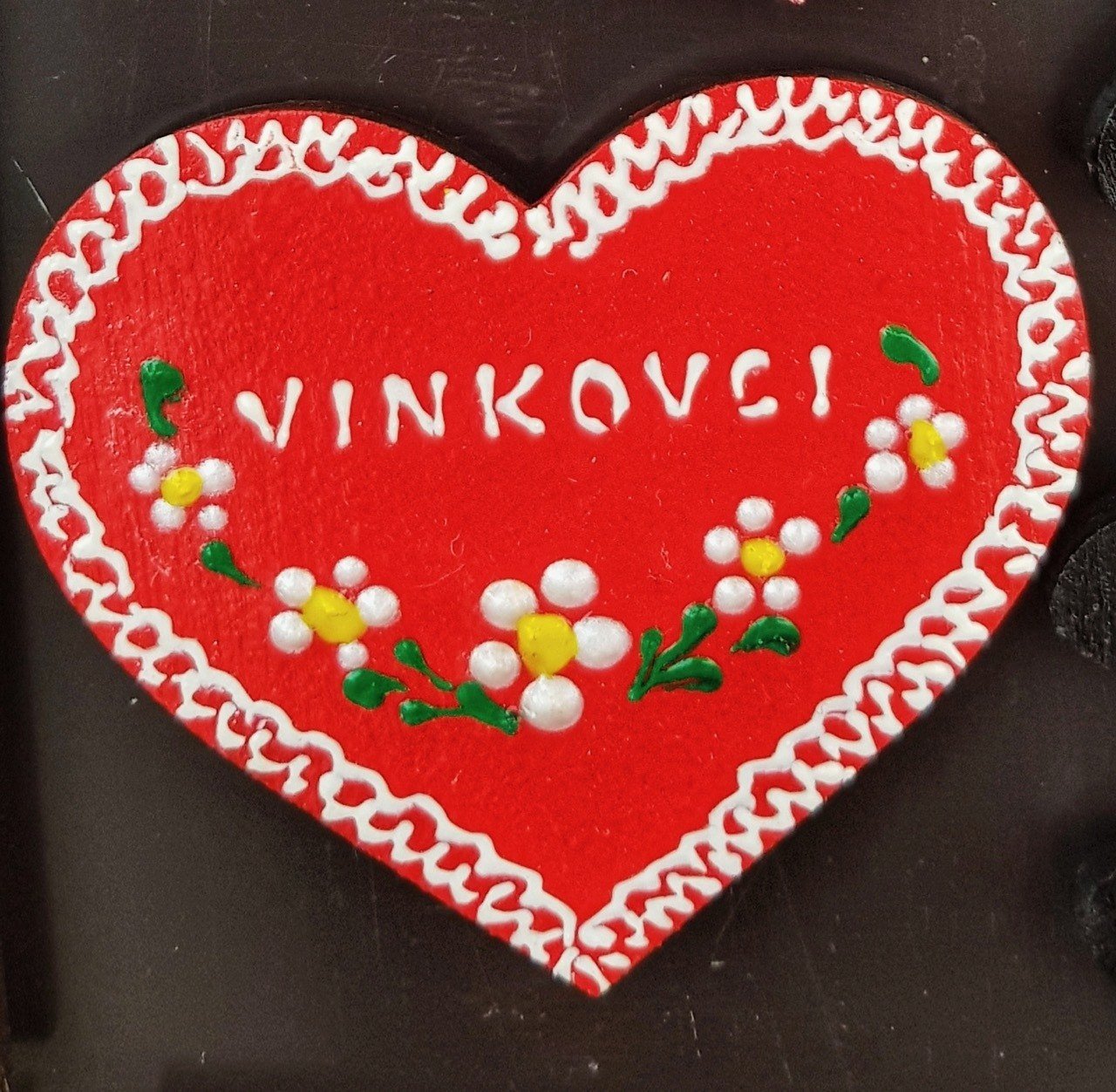
22. Ivan Lupis Vukic constructed the world’s first torpedo in Rijeka in the 19th century.
23. DNA tests have proven that the yummy Zinfandel grape variety originates from Croatia. Wine lovers rejoice!
24. The most famous beach in all of Croatia is Bol, on the island of Brac. Zlatni Rat Beach changes in shape and color depending on the wind.

25. Founded in 1963 in Makarska, Southern Dalmatia is the world’s most comprehensive collection of shells and snails.
26. The majority of Croatians are Catholic.
27. The Catholic Cathedral in Zagreb is the tallest building in Croatia (108 meters).
28. Croatia has 1244 islands, isles, islets & reefs for you to sail through. Just 48 of them are inhabited.
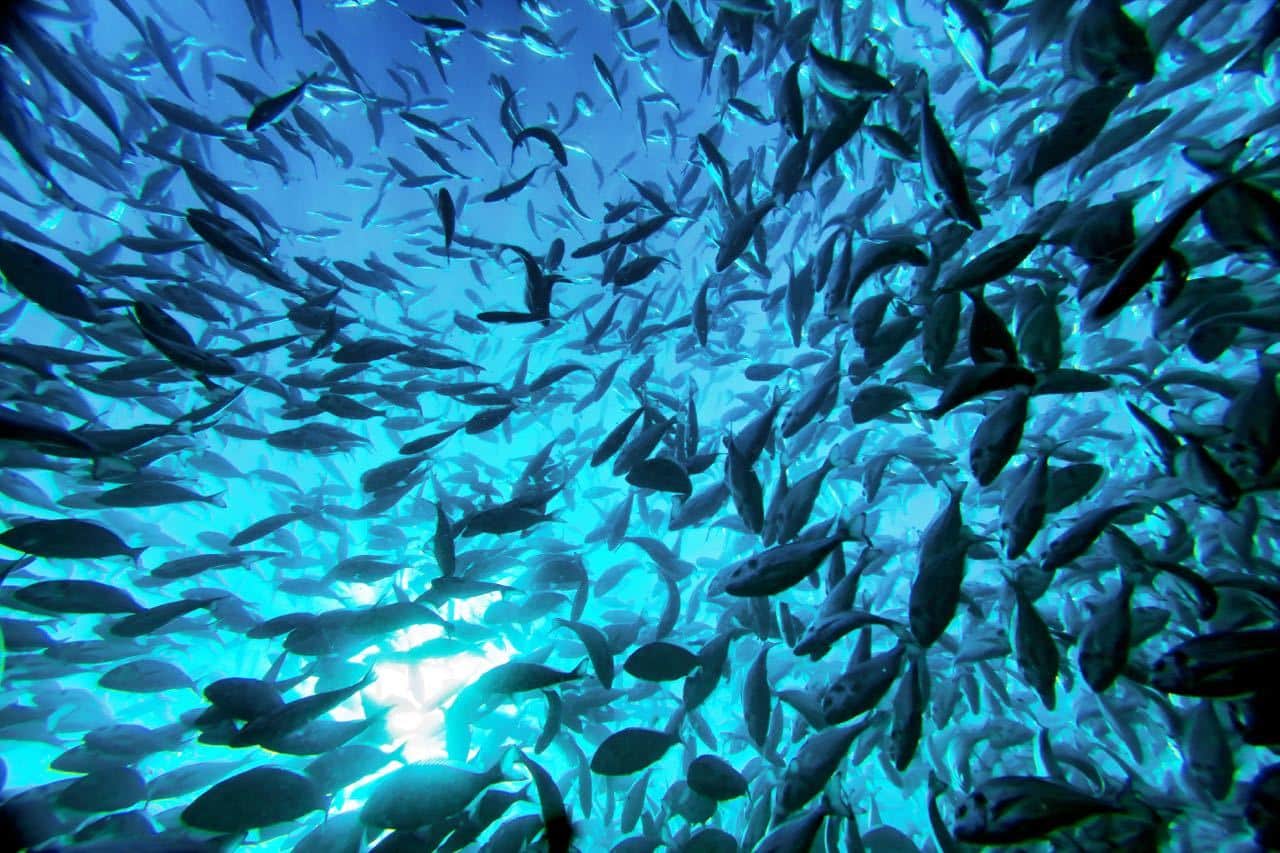
29. The mainland covers 56,542 km², and the surface of the territorial sea is 31,067 km².
30. Croatia has an unknown number of dialects. Those dialects can make it difficult for Croatians to understand one another.
31. Zadar, the seaside town in Dalmatia, holds the title of the best sunset in the world, according to Alfred Hitchcock. Quoted as saying, ‘Zadar has the most beautiful sunset in the world, more beautiful than the one in Key West, Florida.’
32. The Croatian national flower is the iris. It is illegal to pick this protected flower.
33. Biševo island has just 13 residents.
34. The Griffon vultures on Cres are the only ones that roost by the sea anywhere in the world
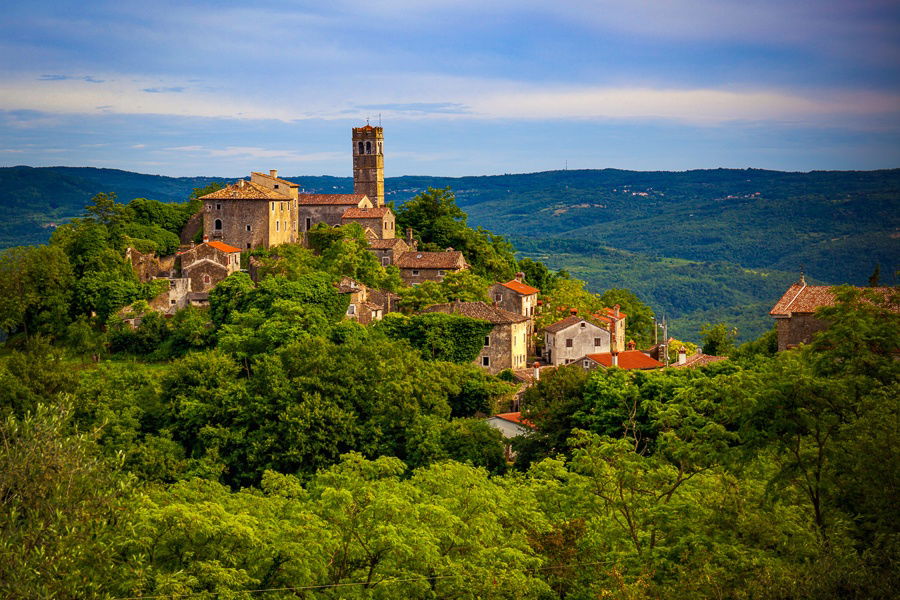
35. Croatia has a leaning tower in Istria. The Belfry in Završje is 22 meters high and is tilted 40cm to the north.
36. Wine is produced in Croatia thanks to the influence of the Greeks from two and a half thousand years ago.
37. Croatia now has more than 300 geographically-defined wine-producing areas in Croatia.
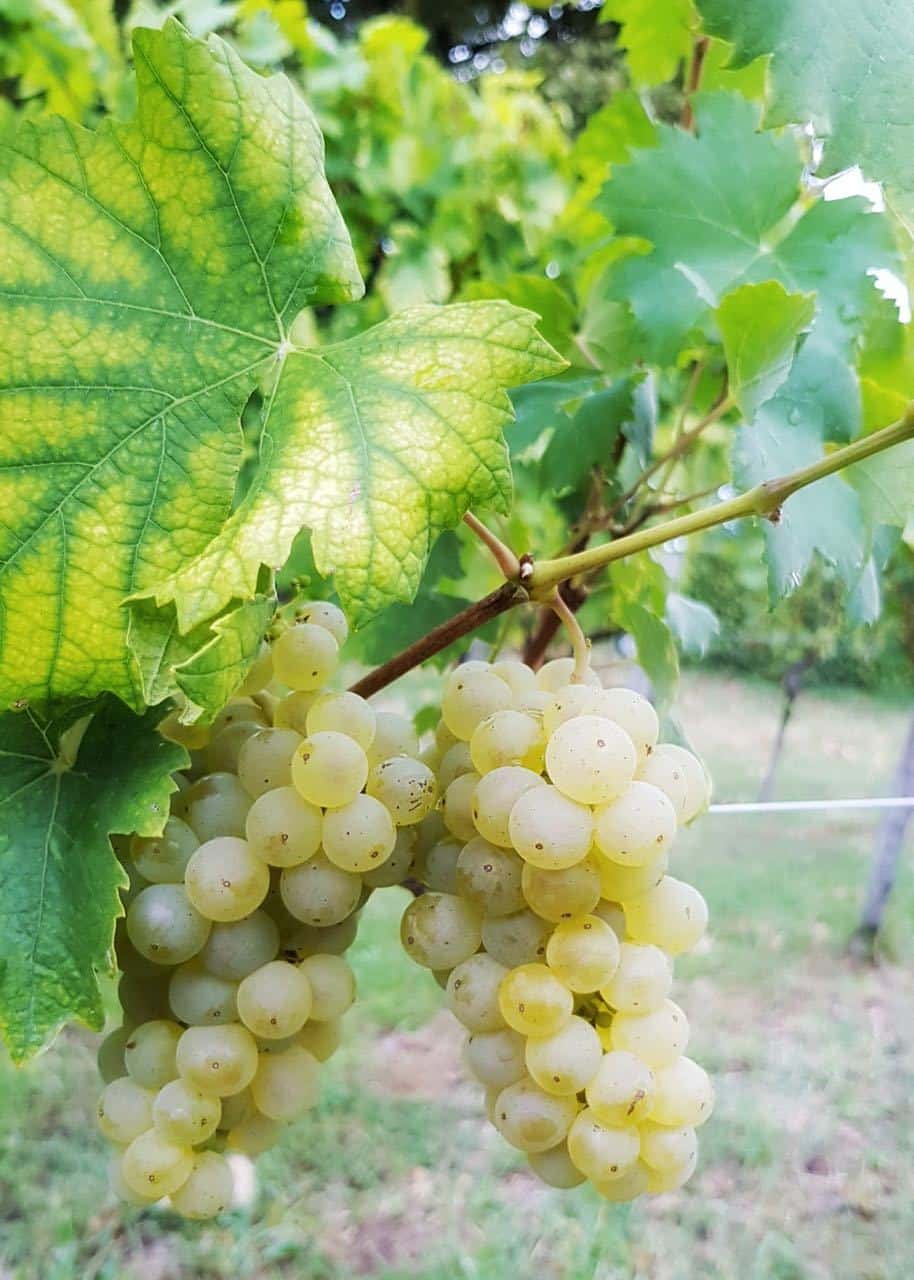
38. Back in the 1960s, Paklenica National Park and Plitvice Lakes doubled as the American Wild West in 11 movies about the fictional Native American hero Winnetou.
39. Built in 1296, Dubrovnik still has in use today one of the first medieval sewage systems
40. In the Dinaric Alps in Croatia, Olm (Proteus anguinus); is the only cave-dwelling chordate species in Europe. This creature can survive ten years without food and lives blind and in the dark.
41. The Olm is known to locals as čovječja ribica, which translates to human fish—called so because of its skin color.
42. The oldest person in Croatia was Nena Tolj, who sadly passed away in 2011, aged 110.

44. Almost 10% of Croatia comprises 11 nature parks, eight national parks, and two nature reserves.
44. Eight thousand books, many of which are written in Glagolitic script, reside in a cave monastery on the Island of Brač known as Blaca.
45. Croatian writer Marko Marulić is credited with the first known use of the word psychology (in the title deeds Psichiologia de ratione animaeHumanae), meaning the science of the soul. Here is proof.
46. The largest island in Croatia is Krk (near Rijeka), with a 405 sq km land area.
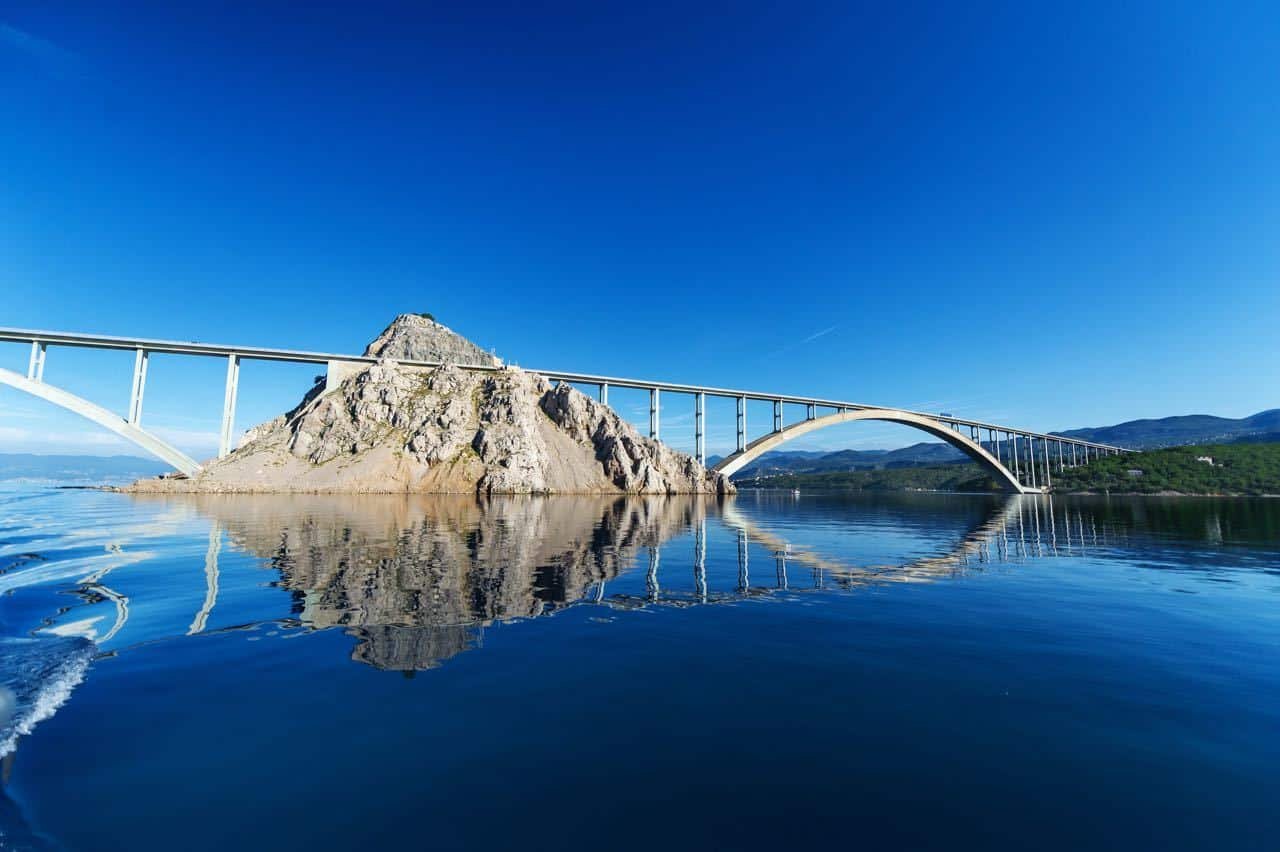
47. You know the movie 101 Dalmatians? Well, here’s a fun fact about Croatia, that breed of dog is from the region of Dalmatia in Croatia.
48. But that’s not the only Croatian dog breed. There is also Croatian Sheep Dog, which is just as cute.
49. Croatia’s Bura wind – the northern to the north-eastern wind is so mighty. It was once recorded blowing on the Maslenički most at 248.4 kmph (21 December 1990).
50. The Rijeka Carnival is the biggest in Croatia and one of the most popular carnivals in Europe.
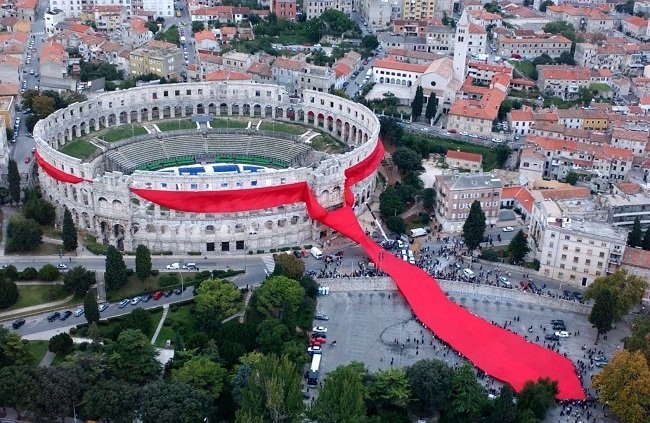
51. The necktie, worn by business people around the world, is from Croatia. As it was named, the cravat originated from Croatian soldiers who served as mercenaries for the King of France.
52. The last specimen of the Mediterranean seal lives in the Croatian aquarium.
53. Shakespeare’s Twelfth Night was staged in Illyria, an ancient region of the Western Balkans whose coast covered modern-day Croatia (Slovenia, Montenegro, and Albania).
54. From 1358 until its capture by Napoleon in 1808, the walled city of Dubrovnik was the center of a city-state known as the Republic of Ragusa.
55. As of Jan 1, 2023, the new Croatian currency is the euro. Previously it was the Kuna.
56. The Croatian euro coins feature Nikola Tesla
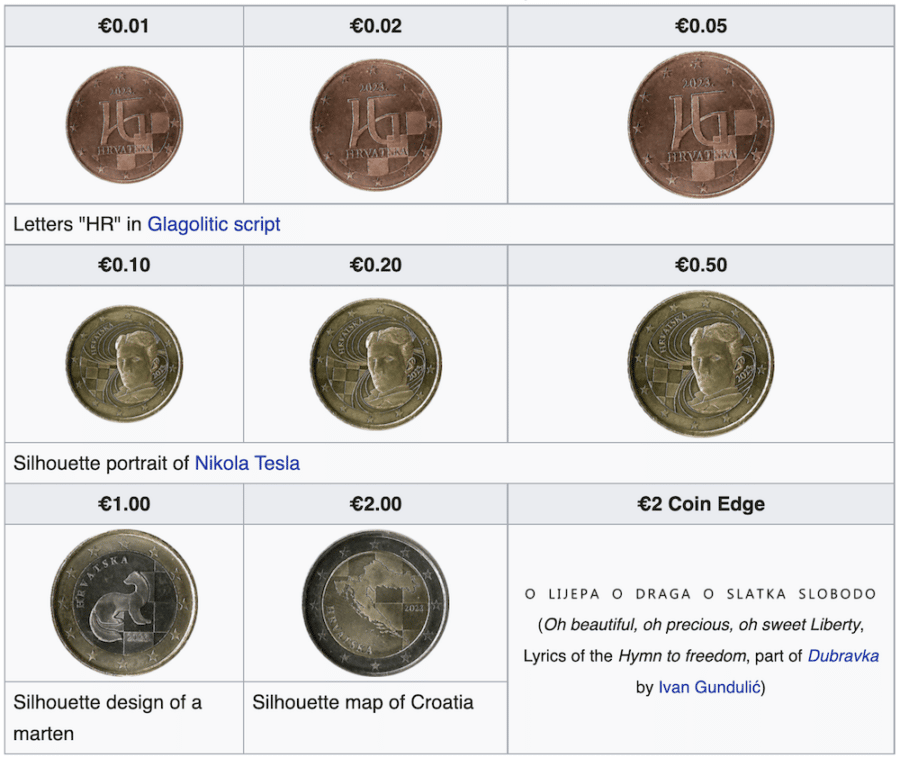
57. The Vucedol Culture Museum in Vukovar offers an astonishing collection of items, including a pot over 5,000 years old.
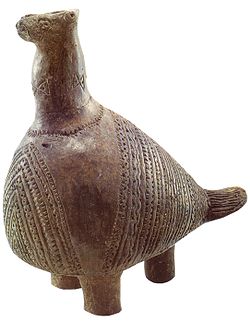
58. On the mountain Vidova Gora, located on the island of Brac, is the peak Sutvid, which is the highest peak in the Adriatic Islands
59. Although most of Croatia is very safe, some areas have hidden landmines that have yet to be removed.
60. The oldest Croatian text was written in 1100, and it is called the Baska tablet, which is about time under the reign of King Zvonimir.
61. Zagreb is Croatia’s capital city, but its first capital was Nin, close to Zadar in Dalmatia.

62. One-third of Croatia is covered in forest.
63. If you give birth on a Jadrolinija ferry from Hvar, your child will get free travel on the ferry for life.
64. The Sphinx in Split was brought over from Egypt for Diocletian and is over 4,000 years old.
65. The English poet Lord Byron called Dubrovnik the pearl of the Adriatic, which still holds this name today.

66. Croatia enjoys 2,715 hours of sunshine a year. That’s more than Sydney, Australia.
67. Irishman James Joyce was considered one of the most influential writers in the modernist avant-garde of the early 20th century. He was a teacher of English in Pula, Istria, in the early 20th century.
68. Croatian citizens can start voting at 16, provided they are employed. If not, they have to wait until they are 18.
69. Two winners of the Nobel Prize in chemistry came from Croatia – Lavoslav Ruzicka (1939) and Vladimir Prelog (1975)
70. The highest peak in Croatia is 1,831 m above sea level.
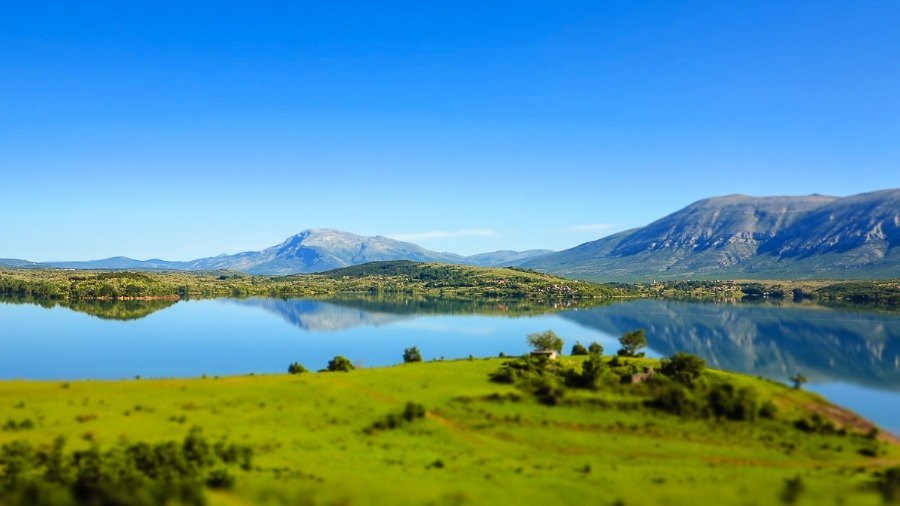
71 . The highest peak in Croatia is called Dinara
72. The oldest known European calendar is based on the constellation of Orion. It was found on a shattered pot in Vinkovci in 1978 (dates back to 2600 BC)
73. FORBES magazine ranked Croatia in the top 12 world’s best retirement havens. Describing Croatia as sitting across the Adriatic Sea from Italy, Croatia offers incredible beauty, a mild Mediterranean climate, ancient culture, tax breaks for retirees, and a low living cost. The Institute for Economics & Peace ·ranks it higher than the U.S. for safety and security.
74. The oldest university in Croatia is the University of Zagreb, established in 1669.
75. The Mag Light was invented by a Croatian named Maglica
76. Croatia was part of the Austro-Hungarian Empire until the end of World War I in 1918; Croatia then joined Serbia, and Slovenia formed a kingdom known as Yugoslavia.
77. Post World War II, Yugoslavia became a federal independent Communist state
78. Croatia declared independence from Yugoslavia in 1991. From then, the Homeland war began with Serbia, lasting four years.
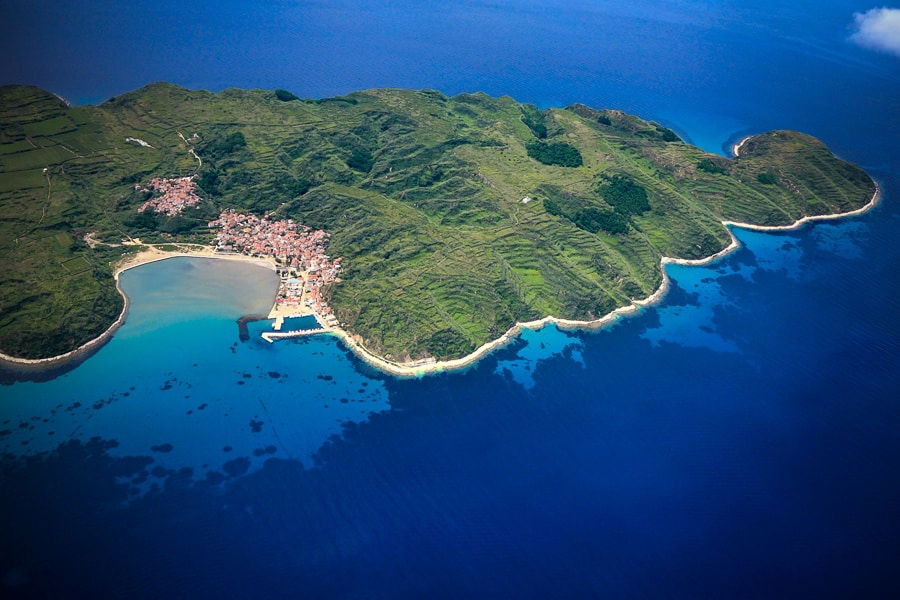
79. In Croatian, the country’s name is Hrvatska, and the language is called Hrvatski.
80. Croatia is the 127th largest country in the world.
81. In Ston, southern Croatia, you find over 5kms of the longest fortification walls in Europe.
82. Croatia is raked4th in the world for alcohol consumption per capita.
83. Each Easter, the island of Hvar holds a Passion procession through seven churches. This tradition began in the Middle Ages and the songs sung are considered to be the oldest Passion songs in Europe
84. Croatia’s drinking water has one of the highest quality standards in Europe.
85. Picigin is a traditional ball game played on the beach in Croatia. An amateur sport played in shallow water consists of players keeping a small ball from touching the water.
86. Croatia has 10 UNESCO World Heritage Sites
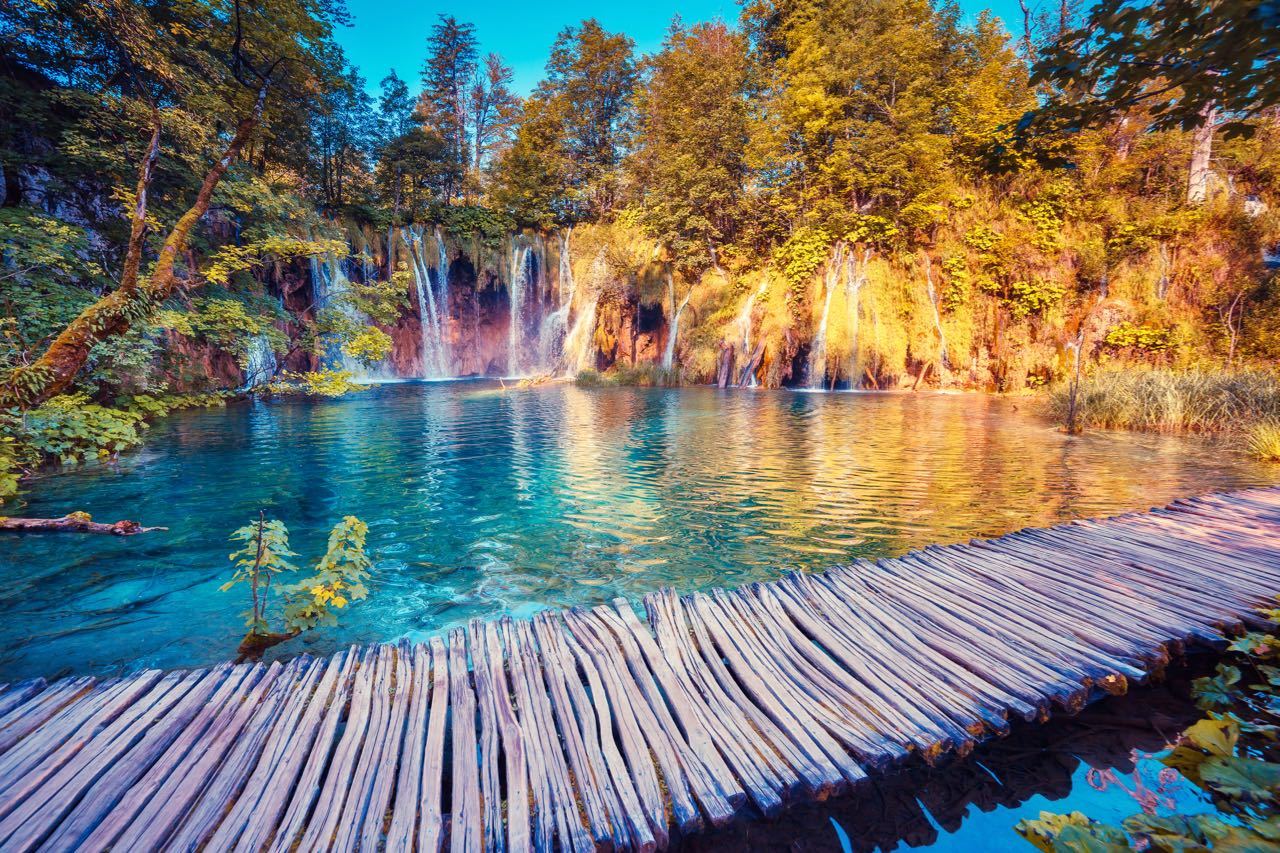
87. The most frequent Croatian family name in Croatia is Horvat (followed by Kovačević, Babić, Marić, Jurić, Novak, Kovačić, and then Knežević).
88. Agatha Christie spent her second honeymoon in Dubrovnik and Split.
89. Fiddler on the roof was filmed in Zagreb
90. Croatian-born Nikola Tesla invented the alternating current. (FYI, Tesla was born to one Serbian parent and one Croatian parent and was a citizen of Austria and then Austro-Hungary. He was educated in Graz and gained professional experience in Prague, Budapest, and Paris before moving to New York and becoming a U.S. citizen. Therefore by some accounts, people claim him to be Serbian, not Croatian) Extra fun fact: Tesla’s birthplace of Smiljan is present-day Croatia. He once said I am equally proud of my Serbian origin and my Croatian fatherland. You might want to check out the annual Nikola Tesla Electric Vehicle Rally when in Croatia at the right time.

91. In April 2011, the largest popcorn box was filled at the Cineplexx in Osijek. Measuring 52.59 cubic meters – the box of popcorn took almost 2 hours to fill
92. Hum, in Istria, is the world’s smallest town
93. Fausto Veranzio invented the parachute in 1617. Born in Šibenik, veranzio was said to be the first person to build and test a parachute. However, sketches of the parachute are also said to have existed prior, including one by Leonardo da Vinci.
94. On the island of Dugi Otok stands the lighthouse of Veli Rat. At 42 meters high, it’s the highest in the Adriatic & locals will tell you that the bright yellow color painted on the lighthouse is due to the 100,000 egg yolks mixed into the paint. Fact or fiction… you decide.

Brands We Use And Trust
Move This Adventure To Your Inbox & Get An Instant Freebie

No spam. Unsubscribe at any time.
Facts About Croatia – That Are Big Fat Lies
95. Near Zadar is the Holy Cross’s Church, the world’s smallest cathedral in Nin. Nope, untrue that Guinness World Record belongs to a cathedral in Missouri, USA.
96. The first hydropower plant was the Jaruga power plant, made in Šibenik and put on the river Krka in 1895. False. Niagara Falls started producing electricity all the way back in 1875.

97. Dubrovnik was once a country, and some people say it was the first country to recognize the independence of the United States. Wrong again. However, Morocco claims to have done so first.
98. The first pharmacy in Europe was opened in 1271 in the UNESCO list town of Trogir. As far as I can see, the first one was opened in 1241 in Trier, Germany
Facts About Croatia That Are Still Mysteries To Me
99. The stone that built the White House in Washington, D.C., comes from the island of Brac. Weeeeeeeeell, it’s not all true. It’s now widely accepted that part of the columns of the White House is made from Brac stone. But nobody knows for sure.
100. Croatia is said to be the homeland of the world-renowned traveler Marco Polo. It’s claimed he was born in Korčula in the 13th century. Korčula was then part of the Republic of Venice, but the actual location of his birth is a mystery and without any evidence to confirm or deny. So you decide if this is fact or fiction.
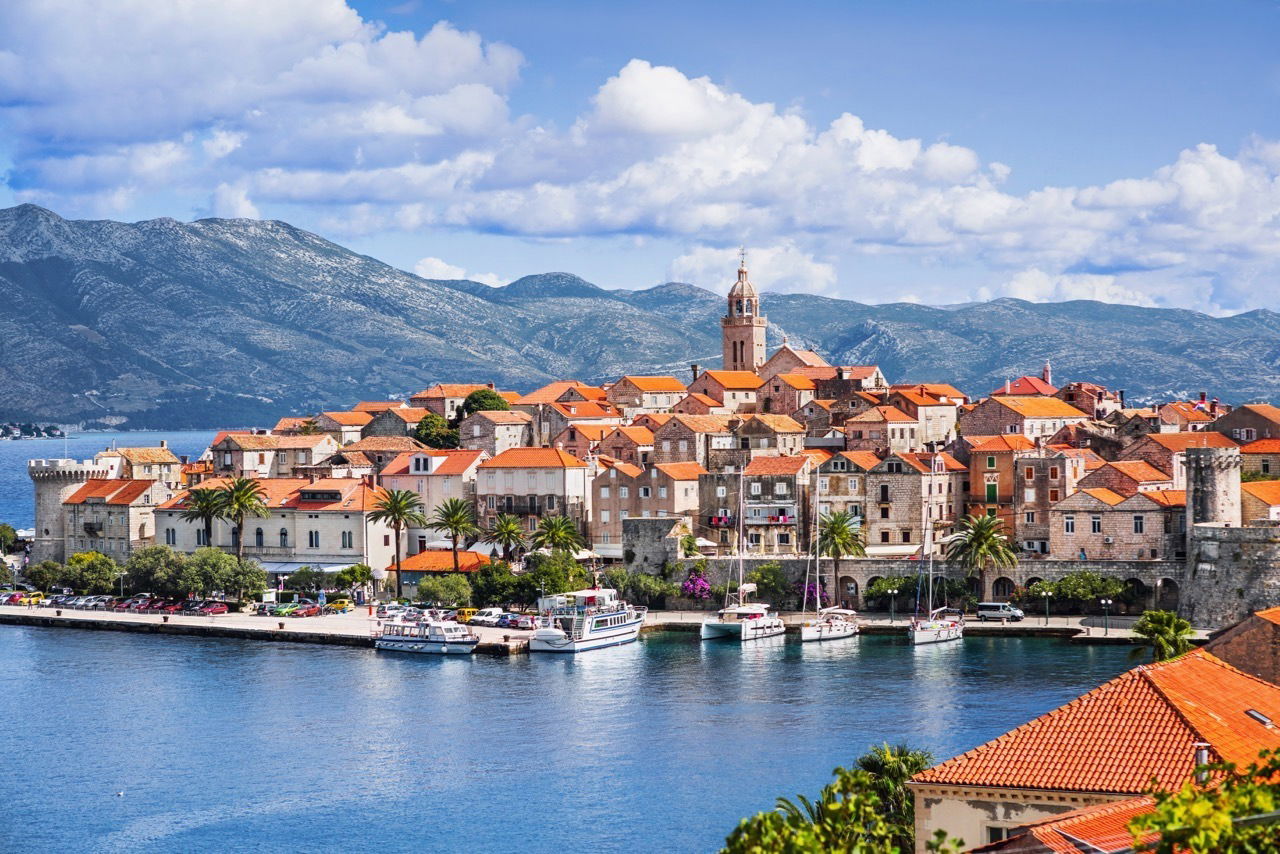
101. David Schwartz was a Hungarian-Croatian aviation pioneer of Jewish descent. He designed and constructed the first dirigible airship. Shortly after, David Schwartz died of a heart attack, and it’s claimed, but not known for sure, that Count Ferdinand von Zeppelin purchased the plans from his widow and constructed the airship that bore his name.
102. The first public theatre in Europe was opened in 1612 on the island of Hvar. But I can see a few other places which lay claim to such history, including London, which claims to have had one open in 1576 by James Burbage
103. Dubrovnik has the oldest law of insurance in Europe. Supposedly starting in 1395, that would make it three centuries older than Lloyd’s. Shame I can’t find any proof either way.
104. From the 9th century on, Croatians used their Glagolitic script. It was used in parallel with Latin script until the 18th century.
105. The last remaining European Griffon vultures in Croatia are located on the island of Cres.
106. Croatian Faust Vrančić designed the first wind turbine.
107. The world’s first pipe organ played by the sea’s rhythmic waves is in Zadar, on the Dalmatian Coast.
108. The eighth deepest cave in the world is in Croatia. Lukina cave is 1,392 m deep and lies in the Sjeverni Velebit National Park, 1,475 m above sea level.

109. The popular film Mamma Mia 2 was filmed on the Croatian Island, Vis – even though the movie is set in Greece.
Which facts about Croatia did I miss or get wrong? If you have any Croatia facts, I’d love to hear from you in the comments below.


You weren’t wrong initially about Tesla; he was born and has roots in modern-day Croatia and his mother was Croatian. They were self proclaimed ‘Yugoslavians’, starting initially with his grandfather who converted to Orthodox. The Serbs simply jumped the gun to claim him as their own even though his public journal entries state that he considers himself belonging to both people, and that he’s glad to be considered a Croat by Croatians. Meanwhile the Serbs have made every effort possible to hide any further information contained in his journal entries.
Nikola is more of a Croatian name anyway.
The biggest lie about Croatia though is that it’s not the most beautiful country with the best people in the world. People often try to claim this but deep down they know it’s true.
While the nature is definitely striking and beautiful, the nation is ridden with many very negative traits such as racism, nationalism, homophobia, violence and so forth. There’s much ‘backwards’ mentality that is preventing the croats from moving forward, and I could go on and on and on about it. I really love the kind croats, but unfortunately most have left or are seriously considering leaving the country for a plethora of reasons. Let’s not hide the truth under the covers, Croatia is at a worse place right now than it has ever been, and no Game of Thrones or UK-organised festivals can save it, but croats themselves which are, to say the least, not willing to do so.
What a bizarre rant. Croatia has many many flaws, but nothing as alarming or unusual as what you’re describing. It’s a pretty normal country in transition.
Game of Thrones or UK-organised festivals can save it – really
Oh my god you could call youself Russian with your dreary and negative thinking. Dont nay say get off your ass and do something. Sitting around all day with your kava and complaining wont fix a problem. Talk about racism and homophobia have you been to the US lately?
Actually, Nikola is derived from greek name Nikolaos, and it’s more popular among orthodox nations (Bulgaria, Serbia, Monterengro, Russia, Macedonia).
Hi, everyone,
In the Museum of Smiljan, where is Nikola Tesla’s birth place, is written that his origin was Vlachian ortodox…
C an you verify the following:
Best
of all, Tesla’s journal, that is kept in Belgrade and which was uncovered by
Ljubica Štefan, the Israeli award
winner of “just among the peoples:”
“I am very
happy that the Croats consider me their own because my ancestors are Croats Koljenović
Draganić from Zadar. They
came to Lika in the 16th century as Croatian noblemen and they settled there.
My ancestors came to Lika by way of Novi Vinodol. The
ancestors of my mother are neoblemen from Novi Vinodol as well. My grand
father, due to circumstances had to go to the Bosnian Krajina, („Turkish
Croatia“). There he married an Orthodox lady and took on the Orthodox
religion. He had buck teeth so the
people called him „Tesla“ similar to the tool used for wood (carving) forming
and that is where my last name Tesla
comes from and which in reality is a nickname. My grand father was an officer
in the regiment of Lika and my father was an Orthodox priest!“ (Nikola Tesla)
In
the end, we can make a conclusion that Tesla’s father was not a Serbian priest
but a priest of the Orthodox Church and not a priest of the Serbian Orthodox
Church. Testla never proclaimed himself to be Serbian.
Nikola Tesla was born an ethnic Serb in the village of Smiljan, within the Military Frontier, in the Austrian Empire (present day Croatia), on 10 July [O.S. 28 June] 1856.[14][15] His father, Milutin Tesla (1819–1879),[16] was a priest of the Eastern Orthodox Church.
Croatia was not a its own country then. This is a fact!!!!! It was the Austro-Hungarian empire.
Tesla’s mother, Đuka Mandić (1822–1892), whose father was also an Eastern Orthodox Church priest,[21] had a talent for making home craft tools and mechanical appliances and the ability to memorize Serbian epic poems. Đuka had never received a formal education. Tesla credited his eidetic memory and creative abilities to his mother’s genetics and influence.[22][23] Tesla’s ancestors
were from western Serbia, near Montenegro.
Memorize Serbian epic poems. Not Croat poems. If he was a Croat why would he memorize Serbian Poems.
Croats have their own ideas of What was Croatian due to misleading stories told over generations by peasants who had no education. They then left their country to live in more prosperous countries and took their stories with them.
Great list!
I would, however, contest point 29 – Griffon Vultures are found all over Europe.
Good point, its badly worded. Thats should be found in Croatia. I’ll edit that shortly. Thanks Sue. Nice to know someone read the whole thing :)
Thanks to point 67 now its clear to me when I moved here many expats were asking: “So young? What are you doing in Dalmatia? :) :) :) “
YES!!!!!! Me also. They still look at me ask ask ‘but why…..’?
Some amazing facts and stats here. Thanks for sharing.
About point 11, I am not sure what consitutes a national costume, but the Irish one is usually above the knee as well.
Is that why we love Lords of the Dance? :)
LOL…..!!!
Btw, great post, I’m Croatian and there’s so much stuff I didn’t know here, great read. I’m skeptical about the Marulić one, though.
Thanks – it’s hard to know for sure really. But I have read it on some good Croatian pages (which I had translated)…. we can ask him when we meet him in heaven :)
Actually, it’s true, confirmed beyond Croatian media which might be considered biased. Here is the article from the New World Encyclopedia
AWESOME! I am linking this in the post – thanks Ivica :)
Great post. :)
I’ve heard a claim that The Statue of Liberty is made of Brač stone. True or false?
(A little side note, we spell hrvatski (the name of the language) without capitalisation. All adjectives ending with -ski, -čki and -ški go without capitalisation.)
That’s false!! Thanks for the tip re capitalisation. Because we do capitalise in English I always forget that rule :) Gahhhh so many language rules. Ajme – thanks for stopping by :)
I’m always happy with all the ideas that you have for posts Mrs CTD. I hope I can contribute with some stuff from my own webpage:
Croatia has a very indented coastline: 1246 islands , islets and reefs! 48 islands are now inhabited, and long ago that number was 66.
First Croatian ruler was not the King, but Prince Trpimir, who was enthroned in the year 852.
…and a bit of politics: Croatians love politics, but the politics still prefer Croats more. Croats have about 150 registered political parties.
Okay, thanks Ratko. Seems I need to take a look at my facts and do some editing. Thanks so much for sharing :)
King Arthur is from Podstrana, they even put a massive sword in the beach. Also a gravestone that is said to bear his name. Myth or Fact?
Ohhh I have never heard of that one before. I’ll ask the Split Tourist Board…. let’s see what they say.
So… I asked and this is what they said.
A gravestone with name of Lucius Artorius Castus was found there, and that pushed the theory that Arthur was buried there. I don’t know about sword in the beach, but maybe in Tourist Board Podstrana they will know if there is any event planned. Their website is
There were lot of news stories about this findings, it seems like authorities removed gravestone for protection, and planned to replace it with replica. I really don’t know if they did it by now. Here is an article from the Daily Mail…
http://www.dailymail.co.uk/travel/article-2024083/King-Arthuir-tourism-sites-Croatia-claims-British-King-new-battle-tourists.html
So… really no one knows. Intriguing!
And now this just in. Supposedly his headstone :)
I think some indications, sometimes turn into myths .. and could never be verified, but neither denied.
Is there any info how many have managed to achieve no. 58? Good job, a very interesting collection!!
Good question! Lemme see if I can find out :)
My friend says an older relative always told her the Italians cut down Dalmatian trees to build Venice – can anyone confirm or deny?
I too have heard that, but when I have asked around no one can give me a straight answer… mystery :D
Im from Krk, my dad is 85 yrs old since I was a child I have been told this story by my dad and my grand mother whose father came from a small coastal area by Venice. That the (hrsti) oaks were cut down and brought to Venice. There is nothing in writing to confirm this except the old people i knew as a child that always spoke of this story.
True. Venice was built on Croatian and Bosnian maple which is, because of its qualitiy, now all gone
That is true. My generation was thought in school that it was Mlecani who were cutting Velebit’s forest to be used in Venice.
That’s a great list, but I have to point out two things:
Croatians are not Slavs and they did not come onto these lands in the 7th century A.D.
That is the what the old Yugoslavs wanted us to think. .
– Profesor Stojan Dimitrijević, at thePhilosophical University in Zagrebu, actually a Croatian Srb, produced evidence of the so named “vučedolskom” pottery that clearly showed the Croatian “šahovnica” (the checkered coat of arms) which dates between 2500 i 2000 years before Christ.
Point 2 – in between your number 70 and 71 you need to identify that there existed a free Croatian state between the two Yugoslavias. It was called NDH (Nezavisna Drzava Hrvatska) and it was as real as the one we are living in now…..just with larger boarders.
And last but not least – Eric Bana is half Croatian! Yes, our Poiter is that good looking because he has Cro genes
NDH was not as real as the one we are living in now!
NHD was a nazi puppet state that existed for a little less than a month. Don’t equate it with the real Croatia.
One month aka three years. Your username describes you real well
Thank you
OMG….You are kidding, right?
The level of utter bull**it in you post is unmeasurable.
Everything you said is a bunch of brainless fiction made up in the 90’s by low educated people.
———————-
Chackered coat of arms was in use long befor croats even existed as people.
From Celts, Romans, Vikings, Middle eastern civilisation….they all used Chackered coat as decoration.
Croats used it for the first time in 10th century as coat of arms of king Stjepan Držislav.
Vučedol findings have decorative lines, and that copper age culture has nothing to do with Croats.
It’s much older culture, like Ilirians in Dalmatia.
Stupidity of not-slavic descent of Croats……Cratian is slavic lenguage.
NDH was a fictional naci ‘puppet-state’ with no power or meaning.
All of Dalmatia was under fashist Italy rule, the rest of Croatia was under nazi Germany rule.
———————————————
I don’t know who tought you this brainless fictional facts, but if I were you, I would read a lot of real historical books, not stupidity made up in the 90’s.
You obviously know absolutely nothing about Croatian history, but have no problem telling ridiculous stories about it.
NDH was fictional? Unlikely Ante Pavelić was given most of his power by Hitler and the NDH was Croatia AND Bosnia and Hercegovina, also your spelling is horrendous, mate this blog is intended for positive information and some fun made by a fellow Aussie, if you don’t like it, then FUCK OFF! SIMPLE!
Actually Brett, what t0m1s7 wrote is correct. I think you just missed his point. NDH was an independent state run by nazis. But no croatian considers it their real state, or wants to be conected with it because of all the attrocities that regime did. Thats why fictional. And he is absolutely right about everything else, what Anna P. wrote is a complete bulshit. Stating that crats are not slavs in like stating chainese are not asians. And sorry for my spelling, english is not my first language and i am to laizy to use a dictionary.
Faust Vrančić from your fact #45 and lie #4 Fausto Veranzio are the same person, and that about parachute is not a lie, but fact. Leonardo did make those, but those were found much later than Faust’s work, and that proves they may have been “on the same page”. Faust’s exploration and work into area of wind is much known to be the best at that time, thus first turbine.
Please let me teach you some anthropology:
Nikola Tesla was born in Croatia. His mother was Croatian, his father was Serbian, so he comes from mixed marriage. Logically, he is from where he was born, thus Croatian.
Traditionally, in Balkans, national origins are attributed to fathers and women are ignored.
That is why Serbians can claim him being Serbian, on the father and tradition platform, and Croatians on the birth origin and mother. Americans can claim him since he died there, but their T. Edisson made sure his name was as unknown as possible there, since he was exploiting him and his work throughout his life there.
Danielle P., Ph.D.
Thanks, I never said it was a lie, it is in the mystery column. But thanks for shedding more light on the issue – for me it still remains a mystery.
Hmmm Tesla is complicated. Even as you state, there is no one answer. Each side has arguments. Regardless he was a brilliant man, to whom we should all be grateful. Thanks for reading Danielle.
No, it’s not complicated. I don’t know what about Tesla is complicated?! He was born in Smiljani which is in Croatia, he went to school in Croatia, on his passport he himself put that he is Croatian, so what confuses you exactly?
This argument can go on forever take for instance in the jewish religion you are of jewish heritage if your mother is jewish. In Regency England it went by the father. In my mothers own case during WWII being born in Croatia of Orthodox parents she was considered Serbian however after escaping the train to a concentration camp and making it to Serbia she was told in no uncertain terms she was not serbian. So the argument continues and probably will for a long time. In my mind the only certain thing is we are a complicated tribe of people and thats OK too. As for Mr. Tesla I’ll take him as Croatian.
Hi, kuna is the name of an animal, right?
BIngo! It sure is Aldenice.
That Croat dog watching at the sea… I don’t know why that photo touched me!
I can understand the negative rant, when you have as many relatives as I do, and see how corrupt the political system is, it’s sad. The economy is suffering, the employment rate is incredibly high, and well educated people in professional careers make very little in comparison. That does not sound like a that great a place to live. Unless you come over to Croatia with a whole lot of money, life will be a struggle for most people. That’s why they are flocking out of there, and the country is concerned that there will be too few Croations left in the county. That’s the truth, and I wouldn’t be saying that since this is my home country and I was born there and do love it dearly. I just don’t see it as great economy to live in.
Most of the land mines are left in Croatia during the serbian aggression in the 90’s…thank you for the great list and all the beautiful other stories about this sunny country in the heart of Europe!!
You are so very welcome, hope you enjoyed the list.
We were in Croatia in May-June of 2013 and again in 2014… in 2013, there were some very bad floodings along the Danube, from Austria to Serbia… but the ones in 2014 were even worse as those floodings unearthed many landmines in croatian and bosnian towns…
The clever Mr Penkala invented a lot of stuff.
Hot water bottle, a fountain pen that sucked up the ink and held it in a little reservoir and insect killing spray.
Washing powder was also invented by a Croat and made in a factory called Saponia i Osijek.
Croatia stood guard to the Christian Europe keeping the rise and power of Islam at bay for centuries.
Mp3 players were invented by Croatian engineers.
As for weather Nikola Tesla was a serb or Croat… his mother was Croatian and he was born in Croatia. as far as I am concerned Croatia has the real estate others can pick over the other stuff.
Really washing powder? I had never heard of that one, thanks!!
Ummmm,sorry,but the info about Nikola Tesla is not correct!!……If you look harder,and find out the exact date and time of his birth,you will see that he was born in Croatia.At this exact time of birth,Croatia was not ruled by any other countries,other than itself!!…it was called a time of Ban!!….so,in saying this,he was born from Serbian people,on Croatian-soil,which then makes him a CROAT. Just like I am born from Croat/Slovenian people in Australia,which then makes me to be an Australian!!….thats how human-being Identification really works!!….where you are born,is who you are!!,,,that’s why a humans I.D / Passport states where you are from/born as your identification,there is no alternative!!….The time of BAN in that area,says that he is then a Croatian,and not Austro/hungarian or serbian or anything else other than a CROATIAN!!!….simple
Wrong.
Kingdom of Croatia was since 1102. a part of joint Croatian-Hungarian kingdom, and later an administrative division that existed within Austro-Hungarian monarchy .
The Kingdom was a part of the Lands of the Crown of St. Stephen (Kingdom of Hungary, Kingdom of Croatia and Slavonia, and sami-independent city of Rijeka), but was subject to direct Imperial Austrian rule for significant periods of time, including its final years.
From 1868. after the Austro-Hungarian compromise, the governor (ban) was appointed by Hungary, 55% percent of all tax money went to Budapest, and Hungary had authority over the biggest sea port of Rijeka.
————-
The story about opening of National theatar in Zagreb 16.10. 1895. is well known.
Emparor Franz Joseph I came to Zagreb 14.10.1895. to officially open the new theatre.
He came as ‘King of Croatia’, but the red carpet on which he came out from railway station, was covered with hungarian land, not croatian.
That enraged a lot of citisens of Zagreb.
A group of young students decided to somehow point out to him that the rule of Khuen Hedervary, apointed as Ban of Croatia from Budapest, was ruthless and vary bad for croatians.
On the last day of emperors visit, it was organised that he will have, among other dignitaries, a group of valedictorian students to walk in front of him from the old Town hall on Upper town (Gornji grad/Gradec) to the main square.
As they arrived on Zagreb main square, students took out hungarian flag, put it on four swards, and set it on fire shouting:
‘Long live Croatian king Franjo Josip (his name in croatian)’.
All that is a historical fact from Croatian history you learn in primary school in Croatia.
At least I did in 1980’s.
————————
Tesla was born in 1856. by croatian perents of orthodox religion, in then Austro-Hungarian monarchy, in the region of Croatia, wich is todays Republic of Croatia.
There was no independet state of Croatia since royal union with Kingdom of Hungary in 1102. (you can still see today in Hungarian Parliament in Budapest The Crown of st. Stephen that was used during coronations of Croatian and Hungarian kings and queens during period of joint kingdom, and later also Austrian kings and queens), until 1991.
Just like there were only colonial states under the rule of British empire until 1901., not Australia, until Sir Henry Parks brought all states in one union and got independence by Queen Victoria, which made the foundation of present australian system of government.
This discussion is pointless. Tesla was born in Smiljan, which is today Croatia, so he is Croatian. If he is Austrian, simply because at the time Croatia was under Austrian rule, then I’m not Croatian either. I’m Yugoslavian, because Croatia was a part of Yugoslavia at the time of my birth. Same point can be made that ban Josip Jelačić was also Austrian, and not Croatian, because at the time of his birth, Croatia was under Austrian rule. It’s stupid. He was born in Lika, his parents were born in Lika, his grandparents and so on, so he is Croatian. Period!
And those talks about him being Serb is ridiculous. He was orthodox and that is religion, not nationality. None of his ancestors were from Serbia.
On the brighter note, fun facts: Šibenik is the oldest town built by Croatians (1066 AD); Šibenik was the largest town in today’s Croatia until plague broke down in 14th century (from cca 12000 residents, it came down to about 2000); Faust Vrančić was from Šibenik and he did invented first parachute (from the drawings of Leonardo da Vinci); famous basketball player Dražen Petrović was born in Šibenik…
As you might have guessed, I’m from Šibenik. :D
On the note of Faust Vrancic….he is barried in churche on little island Prvic-Luka near Sibenik…my beautiful place of birth.There is a very nice museum dedicatet to Faust Vrancic on the island ….it takes only 15 minuts from Vodice by boat….
The Republic of Ragusa was the first state in all of Europe to ban slavery as far back as 1416 A.D.
VARAŽDIN was also capital of the Croatia.
Cres is the biggest/largest Croatian Island, area 405,70 m2.
Wow, great post about my country, thanks a lot!
My two cents about the worlds first torpedo:
“Constructed by Ivan Lupis Vukic in Rijeka Istria in the 19th century was the worlds first torpedo.”
Rijeka is very close to, but not in Istria. Istria is Croatia’s largest peninsula.
Salutes from Poreč, Istria
WOW, thanks so much. I really never knew it was a part of the Kvarner area. I have to go back and find all my mistakes on that point now. LP from Zadar xx
No problem we croats can help you when this part of Kvarner was under Italian rule, rijeka was called fiume but was never Istrian. This part of the northern Adriatic coast people refer to us as Primorci amd the area Primorje meaning by the sea. Did you know the first bridge, connecting the largest island Krk to the mainland,was opened in 1980 and was called Titov Most now Krcki Most. During Venice’s heyday many men from Krk and surrounding areas were captains and navigators on their ships. Most did not have a choice. Prior to WWII, under Italian rule, Italian was the language taught in schools in this region and many people from Cres, Losinj and Mali Losinj that left before WWII cannot speak Croatian. Fun facts.
I read an article about a British agent that character of James Bond was made after and it said that the guy is still alive and lives in Korčula.
I showed it to a friend that also lives there and he couldn’t believe. He said: “WTF!? I know that guy!”
HA! How cool. Never heard that one before.
True.
Marco Polo is from and was born in Croatia. His birth house is located in Korcula
There are still a lot of people on the island of Korcula with the last name Polo. When Brits “discovered” India they were amazed to see Croatian church and statue of St. Blaise (stands to this day) in Goa. Dubrovnik, in it’s heyday, had more ships than Spain and Britain combined and was the only European country that went overseas not to colonize but for mutual benefit. There are a number of words in some Native American languages (i.e. potomak, nizina) that are identical to the words used in the Croat language. As the story goes Ragusan ship sunk right off the coast of North Carolina and the survivors mixed with the natives. New England was originally named New Dalmatia, (Verazano was from Dalmatia) but it all changed with the advent of the Brits. Fearing Venetian aggression, Dubrovnik ceded a chunk of it’s territory to Turkey (Bosnia). That is why to this day Croatia is effectively split in two. The saddest part of all is that Serbs had managed to strike the Croat history off the books in less than 50 years.
So many interesting this that I had never heard of. I’d love to know more details around these points. Thanks so much for sharing Lenger.
Sure. Let me know which ones and I’ll elaborate.
That’s kind of you, that’s too much to ask of you though xx
Actually we don’t have a proof that king tomislav was crowned so history teaches us that the king Stjepan Držislav was the first king we know was crowned but a lot of people from Croatia don’t know this either (we’re just learning about it, otherwise i wouldn’t know it either)
p.s. sorry about my english i’m from croatia so..
Ohhh fascinating, thanks Karla. Oh how sad for all of those boys names Tomislav after thie king. Keep me posted on this being confirmed. Thanks for stopping by, oh, and your English was great.
Great post and really helpful comments. I can’t stress enough how beautiful Croatia is having grown up there and having spent every school holiday travelling to it’s many well known and hidden treasures. As a country it has so much going for it and the Croatian culture I know (or knew) is not xenophobic but rather proud of its achievements and assets. Yes, it did have and still does have it faults (politically and socially) although there are many other countries (some of which I have lived in) that take the moral high-ground whilst hiding their own political hypocricies and social inequalities “more efficiently”.
Woow really needed to be researched to write this article.
From what I know, no one is claiming that the hydroelectric plan on the river Krka was first ever, it was open after the one on Niagara waterfalls but it was the first one in Europe, second in the world!
Also, along the Istrian Coast were found dinosaurs bones, that is the only dinosaurs bones found along Mediterranean coast!
Racism, nationalism, homophobia and violence? Name me one country that doesn’t have all of those? Dickhead!!!!
We are the only nation in the world that greets and bids farewell with the term “Bog” (meaning God)
Bog i Hrvati (God and Croatians)
Hey and what about our electric Supercar – the third fastest car of all time with any power unit – the Rimac “Concept One”
“Bog” is the only word I know to say hi and bye to others. Now I know it’s mean.
Aloha in Hawaian language is used To say hello and goodbye, as with the Nepali word “Namaste” which is frequently used as a salutary greeting and when departing from a conversation. The latter roughly translates to “I salute the spirit within”
Claims made about Croatia that are still mysteries to me;
Claim #2
I can tell you that up until about 50 years ago in some places in Croatia, due to lack, or price of cement, eggs mixed with calcium hydroxide(which is available in mass everywhere in Croatia due to limestone is most common stone in Croatia) were used as cement to produce mortar which was then used to build houses and other housing units
Regards
Martin
Hum a town in Istra is the smallest town in the world, the first Submarine was constructed by a Croatian ect. you still have a lot of research to do, but your on a good road
I would like to know more about Ravna Gora. My Grandfather Stefan A Polancic (Poljancic)was born there and moved to the US when he was 16.
Try here – just use google translate to help you. Perhaps you could also ask the tourist board if they have any books in English, I know my small village had one.
Medju 4 najbogatije nacionalne astrognozije tj. nebeske kulture na svijetu pripada i naše čakavsko zvizdoslovje pomorskih ‘Bodula’ na jadranskim otocima od Visa do Krka, koje ukupno obuhvaća 127 domaćih zvjezdanih naziva za nebeske objekte: 64 imena pojedinih zvijezda, 36 čakavskih naziva za zviježdja i ostalih tridesetak su imena 5 planeta, 3 Jupitrova satelita, po desetak detalja na Mjesecu i Mliječnom putu, te imena vidljivih maglica – vidi pobliže Čakavsko zvizdoslovje. Po domaćim imenima maglica, pa desetak Mjesečevih detalja i 3 Jupitrova mjeseca je naša čakavska astrognozija vjerojatno najbogatija u svijetu. Prvi temelji toga jadranskog zvizdoslovja kao lokalna pomorska baština potječu još od ranih pomorskih Liburna pred dva i pol tisućljeća, kojih su zvjezdani nazivi potom u srednjem vijeku dijelom slavizirani, ter još dodatno obogaćeni romanskim, grčkim, kršćanskim i inim pojmovima. ……. roughly translated Croatians are fourth in line in cosmogony (sky culture) in the world. After Arabs (300) Chinese (190) and Greeks (100+) we have our very own 127 names of celestial objects. That’s a fact….. And a legend, which someone should look up and research is about a fisherman from Komiza harbour at island of Vis who was the first to come up with immediate cooling system of fish right out of water , who then emigrated to USA San Diego (I think) showed his skills to other fishermen and opened a first ‘modern like’ fish factory. This is such a cool article BTW
The world strongest man was Croat. His name was Marijan Matijević. There are a couple of articles about him including wikipedia but are all on Croatian. I have no time to translate it but it is very interesting all the things he could do.
And in Jablanac, a small town, there is a mountain lodge which holds the record for being on the lowest sea level in the world. But that fact needs to be researched. :)
Wrong at this webpage:
Rijeka is not in Istria. (18.)
Aside from leaning tower in Zavrsje, there is also one in Rijeka. (31.)
About pharmacies- Dubrovnik vs. Trier (false about Croatia No. 4) Dubrovnik´s pharmacy is the oldest in the world continuously working untill present days.
Fact 68. – wrong. University of Zadar was founded back in 1396. and it is the oldest university in the area of today’s Croatian, which operated until 1807. Since then, in Zadar operating institution of higher education to the foundation of the renewed University of Zadar in 2002. year.
The oldest University of Croatia was founded in Zadar 1396. in dominican monastery under the name “General school of philosophy and theology” and had it’s autonomy until 1807. After those years it was working under other Institutions (University of Zagreb, University of Split). In 2002. was founded University of Zadar, first integrated university in Croatia.
The oldest University working continuously until today is the one in Zagreb, founded 1669.
Hi, I would like to add that many Croats were part of Napoleon’s army and they were known as great warriors, and Napoleon himself stated: “Croats are the best soldiers in the world. If I had only 100 000 Croats, I would conquer the entire world!”
And afaik saved Napoleon when he was retreating from Russia
The oldest Croatian university is in Zadar, established in 1396, university of Zagreb is established 273 years later
Check!
Fascinating read
Great read!
According to Wikipedia, Fiddler on the Roof was filmed in Mala Gorica, Lekenik and Zagreb. They are mentioned in the credits at the end of the film.
Duka Mandic, Nikola Tesla’s Mother, is of Croatian descent. His Father was of Serbian roots.
Temeljem određenih nalaza su izronile i teze o hrvatskom podrijetlu Nikole Tesle. Prema tim materijalima, koje je našla prof. Ljubica Štefan, o porijeklu prezimena Tesla je govorio sam Tesla kad je u svom dnevniku pisao da je njegov djed taj nadimak dobio zbog toga jer je “imao isturene prednje zube pa ga je narod prozvao Tesla prema alatki kojom se obrađuje drvo i otud i moje sadašnje prezime Tesla”. U tim tekstovima je stajalo “Drago mi je što me i Hrvati smatraju svojim jer su moji preci hrvatski koljenovići Draganići iz Zadra. Kao hrvatski plemići u 16. stoljeću došli su u Liku i tu ostali. U Liku su moji prepreci došli preko Novog Vinodola. Preci moje majke, Kalinići, također su hrvatski plemići iz Novog Vinodola. Moj pradjed stjecajem okolnosti morao je otići u Bosansku krajinu (turska Hrvatska) i tamo se oženio pravoslavnom djevojkom i prešao na pravoslavlje. On je imao isturene prednje zube pa ga je narod prozvao Tesla prema alatki kojom se obrađuje drvo i otud i moje sadašnje prezime Tesla. To je zapravo nadimak. Moj djed je bio časnik u ličkoj regimenti, a moj otac pravoslavni prota!“
No svakako tezu o hrvatskom porijeklu podržava i Talijanska enciklopedija znanosti, književnosti i umjetnosti “Treccani” to je talijansko istraživanje i nove povijesno-znanstvene spoznaje Republika Italija nagradila zlatnom medaljom za kulturu i umjetnost 1988.
this facts are wrong
26. croatian language have 3 main dialects(Čakavsko narječje,Kajkavsko narječje and Štokavsko narječje(narječje=dialect) but that 3 dialects have subdialects used in certain regions of croatia
47.correct name of tie on croatian is kravata not cravat and it was worn by solders but u didnt put the biggest info about it… wifes of the solders would put ties on there husbands before going into battle for safe return
67. small living costs apply only to foreigners, since they have higher incomes than the Croatians, in fact the Croatian people are struggling to survive bigger and bigger cost of living without increasing wages (this refers to the middle and lower class people)
Lighthouses at adriatic islands were mostly finished with eggs (because its better than anything else against sea salt+storms) :) yep, tens of thousands of eggs :)
how is that meant?
only Europe mysterious mummies are in a main church of city Vodnjan (Istria, near Pula)
must see before die, check it!
Benedetto Cotrugli (Croatian: Benedikt “Beno” Kotruljević; 1416–1469) was a Ragusan merchant, economist, scientist, diplomat and humanist. Cotrugli was born in the city of Ragusa (modern Dubrovnik), part of the Republic of Ragusa. The EARLIEST extant copy of his manuscript Libro de l’Arte de la Mercatura (Book on the Art of Trade) is kept in the National Library of Malta and is dated 1475, although the original manuscript was dated 1458. The text of his 1458 manuscript Della mercatura e del mercante perfetto is consider to be the FIRST European manual on trade and accounting. It predates the description made by Luca Pacioli of the modern double-entry system in his Summa de arithmetica of 1494.
The stone for the White House being quarried from Brac, Croatia is false. I was researching this for my Croatia trip (www.BlueSkyTraveler.com)
Here is the NY Times article that started this false claim and it was corrected –
Ahhh thanks for that Teri – off to read it now…
Hi, Croatia also borders Montenegro I think!
And I know Austrian Parliament was built from Istrian Stone… btw
great site!
kind regards hedi
Really? I never heard that before – do you have a link to prove that about parliament? I cant find anything.
Hi,
yes I can!
But of course I now looked a bit more exact – so they say that the floor is made of Istrias karst marble!. Not the whole building!
they (austrian hungarian monarchy) wanted to use building materials from all the crown lands…
“die Bodenplatten aus istrischem Karstmarmor” the link is german and you find it under “Säulenhalle”
http://www.wien-vienna.at/blickpunkte.php?ID=1102
and I also found an english link
“of the great hypostyle hall of Adnet marble, the floor panels of Istrian karst marble.”
https://www.flickr.com/photos/russianchild007/13032770104
so happy first advent!!!
COOOOOOOOL!!! Thanks for that Hedi – how nice of you.
you’re very welcome :))
ah, now I know what wanted to tell you too…
about the oldest found written stone-blog in 1100
I guess there’s an much older one in Lumbarda, Korcula – called
“Psephisma from Lumbarda” from 3rd century BC
It’s written in 2 or3 languages what made it easier to translate…
And where is the mention to our beloved slivovica? At least I consider it a treasure of Croatia, as well as the olive oil made in homes in the rural areas.
I have a question. My grandfather came to America when he was 9 from Novi, Yugoslavia. Is Novi now called Novi Vinodolski, Croatia? I’m planning a trip to Croatia in 2 years and I want to be able to visit where he was from. I know it was supposed to be a coastal city. Thanks for any info you can give.
Hmmm, Novi just means new – and I can’t say for sure about that. I would suggest joining this group to ask – best wishes.
Determining a nationality in Central and Eastern Europe was a difficult task in certain centuries… Tesla was born in present day Croatia, even if back then a big chunk of the region was part of the Austro Hungarian Empire… If that logic is followed, then Father Roger Boscovic, the other great jesuit priest and croatian scientist, considered the Father of Modern Atomic Theory would be Ragusan as he was born in Dubrovnik in 1711…
One croatian fact and personality I like is medieval Bishop Gregory of Nin, or Grgur Ninski, who lived at the end of the 900s, and introduced the national language in religious services, that until then were held only in latin, not understandable to the majority of the population. This proved very important for croatian language and culture, but it also made christianity stronger in the croatian kingdom… nevertheless, the legend says it got him in bad terms with the Pope because of disobedience, so Gregory was demoted and eventually lost in history… there is a huge statue of him just outside the Dioclecian Palace in Split.
I have even heard that croatian language remained in use as a second church language until the Second Vatican Council were the pope allowed all non-latin languages to be used. As I was told they actually held a mass in the original croatian with glagolic prayer books to show the pope that it contains no heresy to worship on other languages. That council was held in 1962.-1965.
And people rub his big toe for good luck. After centuries of rubbing, that toe shines like gold by now.
Excelent, excelent, excelent!
Thanks a million!
Great blog from a fellow Australian. I too have travelled to Croatia on a number of occasions as I think it’s one of the most beautiful places I have ever seen “Heaven on earth” as one journalist described it. It has such beauty the whole country could be declared a UNESCO site . One thing that I have noticed is that people in the Balkans are very real but also very pessimistic and like to whinge. All I can say is life is not easy anywhere for everyone. People in Australia do it tough also and in my opinion Western suburbs of Sydney have more poverty and there are more beggars in Sydney than Croatia. Nothing comes without hard work and innovation. Ask not what your country can do for you but what you can do for your country said an American president.Some Croats should start living by this motto and stop waiting for the government , yes previous governments have been corrupt but the people have voted them back in after one term so now they have to realise that a government can only provide as much as the taxes that people pay.
Thanks Dani! Yes that is true, but after living here for 3 years it wears you down and it’s hard to raise up. Life is not the same when you are in vacation mode. Thanks for your comment and stopping by xx
Dubrovnik does have the oldest law inurrance document dating back to 1395, and it is now in Dubrovnik’s Maritime museum.
36 is false – Olm is Slovenian and not croatian! It was first discovered in Slovenian Postojna cave and first mentioned by slovenian writer Johannes V. Von Valvasor about 300 years ago.
Actually Tesla’s mother was croatian not full Serbian. My father was from the same town from him. This is fact!
Faust Vrančić did invent the first parachute tho … it’s not a mystery cuz every Croatian knows that . And Nikola Tesla being born in Croatia is true but his father was a serb so serbians argue with us saying he’s a serb .
Actually, wrong. Both Tesla’s father and mother were croats. They were just of orthodox religion and only because his great grandfather switched to it when he married into orthodox family. Please, stop mixing nationalities and religions. By that way of thinking, if I sm buddhist, I must be either indian or chinese.
With you on this one! I studied Croatian Culture. Pls check the facts about Tesla but I don’t blame SJ because it’s so politically twisted in Croatia since the old Yugoslav times when facts were turned up side down in favour of Serbia.
Thank u for listing most facts about Croatia and most of the facts that you have written on your post is out of people’s mind and most of us maybe never aware of those ones. Maybe adding the venue of UNESCO sites on Croatia will make it more interesting since people tend to visit most UNESCO sites when they travel around the world.
We’ve got those covered here:
Oldest croatian Univerity is University of Zadar with centuries long tradition. First mention was in 10th century and Universitas Jadertina records date of founding to be 14.06.1396. More i fo can be found on http://www.unizd.hr.
Great article anyways!
Update it please :)
Cheers!
Cheer
a ima ih barem miljun…….
My mother and her family, Husband, Mother and Son immigrated from the Hungarian Empire in the early 1900’s, at the time my mother was four or five. they ended up settling in LaSalle Peru Illinois, I believe a family member had immigrated earlier and had previously settled in Illinois. My grandmother, Gertrude Zokalj Grandfather John Zokalj Gertrude, as the story goes was a conscripted cook for the army of Emperor Franz Joseph.
I also believe my mothers family live in the small town of Kravarsko in Croatia not far from Zagreb.
Any information regarding the surname of Zokalj or other family or relevant information would be greatly appreciated
I recommend you join this group – lots of people can point you in the right direction.
https://actacroatica.com/en/surname/%C5%BDokalj/
This might be of use, its index of Croatian surnames with their history.
Thanks for these interesting facts about Croatia, and the pics are awesome. Keep sharing.
Wow you have unlimited dialects but only has 3.45 million people ? Not in sacarstic way. But it’s so contradictory.
I didn’t realize how clever and culturally important Croatia is and their impact on the world! Amazing!
fact 55 is wrong, nikola tesla was a croatian,false facts 3 wrong, i am a croatian and you should made your resarch better.and marco polo was not from croatia
Red lake
deepest sinkhole in Europe, 3th in the world
https://en.m.wikipedia.org/wiki/Red_Lake_(Croatia)
…and Blue lake, its relative
https://en.m.wikipedia.org/wiki/Blue_Lake_(Croatia)
https://m.youtube.com/watch?ebc=ANyPxKoMXfq05MOh2Lk36jGViIGdbDpvghi82A0hfmXwZvsY8EKVDttTxfbGflR2aEjLp9zBINcFm8bXy4xtz2ajqt9GU8QR9A&v=EecjrnVxNbc&time_continue=157
Also, display of passion in Imotski on Palm Sunday with 500 amateur actors, turning town into Jerusalem for a night
Cheers
https://en.m.wikipedia.org/wiki/Blue_Lake_(Croatia)
Did you know that in Poland were before Croatians, but Polandians called them “white Croatians”
Forgot to say that Croats don’t believe in their official history and originis, for centuries Croats were european slaves and first line soldiers, than became lords and dukes, in ww2 Croats became nacis, in 1991. Croats let their politicians start a civil war , rob the country and destroy childrens future.
G, you’re an idiot and have no idea what you’re talking about.
What are ‘nacis’ and you don’t seem to be divulging facts, rather convoluted personal beliefs.
Wonderful spots for traveling. Love your post.
Ivan vučetić ,fingerprints
You missed Sinjska Alka, an equestrian competition held in the town of Sinj since 1715 that commemorates Croatian-Venetian victory over Ottomans on August 14, 1715. See more on Wiki.
Ah yes! I’ll have to add that one next update xx
We don’t know if Tomislav was crowned in 925 AD or some other year. All we know is that he was mentioned as a “king” in a letter from 925 (which we have only in a later copy).
So an error in the first fact :(
You forgot to talk about the people. They are egotistical, stuck up, disdainful, antagonistic and haughty and RUDE. No manners. Aggressive. The men are violent toward other men and their women, they are sexist and proud, and always are philanderers and cheating on their wives and girlfriends without guilt. The women are slutty, dress like whores and are attention seeking and stupid. Both men and women are above all GREEDY gold digging immoral slime. They will steal from their own daughters and fuck the farm animals. Not exaggerating. The country is beautiful but the inhabitants are ugly as sin.
Sounds about right. Everything you said is true for average Croat. But so it is for average human being of the planet. It’s true for you too, and pretty obviously so. Otherwise you wouldn’t be here doing immature, pissed off generalizations. All you said is Croats are nothing special. Boo hoo. Welcome to the planet.
Kuna (Marten) is NOT a rodent
itis from the family mustelidae, which are carnivorous mammals, together with otters, weasels, badgers, ferrets etc (you can
Well, I must give 10 out of 10 Score to this content.
Best post on facts about Croata that I have found so far!
LOVE all of these, you knew so many I didn’t.
Please include facts:
Pope Sikstus V was croatian.
Alka-the oldest knight game in Europe.
Investigate why Croatian Marijo Puratić is on a 5 Canadian dollar bill.
Croat Ivan Vučetić is the inventor of dactyloscopy … fingerprints.
Interesting facts too: Napoleon is quoted as saying to general Marmont: “I never had more braver and … If I had only 100 000 Croatians, I would conquer the entire world!”.
the first historically documented vampire is Jure Grando from Istria, Croatia, 17ct.
Investigate the fact that Croatian bagpipes are older than Irish and Scottish ones.
Suleiman the Magnificent was stopped in the battle of Siget in today’s Hungary by the Croats, where he lost his life. On the other side the Sultan’s right hand man and the Grand Vizier of the Ottoman Empire and the Sultan’s son-in-law was a Croat Rustem-pasha originally from Skradin in Croatia..and the admiral of the sultan’s navy fleet was also a Croat.
The first grammar of the Croatian language was published in 1604 in Rome only 18 years after the first grammar of the English language.
chocolate with rice was made in the Croatian factory Zvečevo in 1963.
In New Zealand there is a Tarara people who originated a mixture of Croats and Maori.
In Moorish Spain during the 11th century under the Omayad dynasty there was an elite Croatian guard of 15,000 soldiers and 6 Croats rose to the leading grand viziers of admirals and generals.
Venice, as a military and trade superpower, has been paying tribute to Neretva pirates in Croatia for over 100 years for crossing the Adriatic Sea.
The first country in the world to recognize the independence of the United States was the Croatian Republic of Dubrovnik.
Dubrovnik was the first city in the world to introduce quarantine without interruption of trade on July 27, 1377.
Thanx and regards,
LP
You should read “Vejske povede”from Island of Krk!
And about King Tomislava you need to find what Abdul Fiday wrote he was Moorish historian!
And one more thing you should investigate something about Kačić family pirates that lasted for about 300years in city of Omiš! They fought againts Venice and everybody was paying taxes for pass!! Including Dubrovnik! Some say that capital of Reliquim reliquiarem smallest Croatian terithory thru centuries was in Omiš under Kačić!
Also very important there is strong connection between nowdays surnames in Croatia with those that of the old Hettites!
Okay thanks so much, I’ll take a look at these suggestions.
whoah this blog is magnificent.Keep up the great work!